Costa Rica Food-30+ Foods To Try In Costa Rica
This post may contain affiliate links.
Huge list of the best Costa Rica food to try on your next trip. Eat like a tico! Gallo pinto, casados, street food, desserts, and of course coffee!
I feel like so many people visit Costa Rica and come home underwhelmed by the food. Many Costa Rican kitchens try to cater to American tastes by serving hamburgers, fries, pizza, nachos, and soft drinks. (Side note- when I tell Costa Ricans I didn’t even eat many of those foods regularly until I lived in Costa Rica they are surprised.)
Additionally, many Costa Rican tours include meals- but they are buffets with watered-down versions of Costa Rican food that is mass-produced to get people through the meal and onto the next tour. It’s efficient which I totally get, but it’s not representative of the many meals lovingly prepared from scratch across the country.
So I decided to write this post as a foodie travel guide to Costa Rica. You’ll need to go off the beaten path a bit to find the best Costa Rican cuisine, and you may have to leave your comfort zone by ordering in Spanish or by using hand signs. I promise- it will be worth it when you take bites of the delicious traditional Costa Rican food.
Here are three tips I have for finding great restaurants around the country:
- If there is no menu available in English you are on the right track
- If the restaurant is hopping with locals at noon you will have a great meal
- The electricians in Costa Rica often cover large territories daily in teams of two. They have trucks that say ICE on the side, and they usually wear yellow and blue shirts. Wherever they are eating you’ll get the best meal in the area. These guys don’t mess around when it comes to food.
Note- the majority of the links in this post lead to recipes for the dishes described, along with much more in-depth info about each dish and its origin.
- Thinking cocktails? Check out our Costa Rican Cocktails guide.
- Gluten-Free Costa Rica– a full guide.
- Vegan Costa Rica – everything you need to know.
How To Order In Costa Rican Restaurants
If you are wondering how to order food in a restaurant, here are a few sentence starters:
- Me gustaría el/la … (I would like…)
- Quiero un/a… (I want)
- ¿Tienen…? (Do you have?)
Make sure to bookmark this post on your phone so you can remember everything you want to try when you are visiting Costa Rica!
Related post: Saving Money In Costa Rican Restaurants
Typical Costa Rican Breakfast Foods
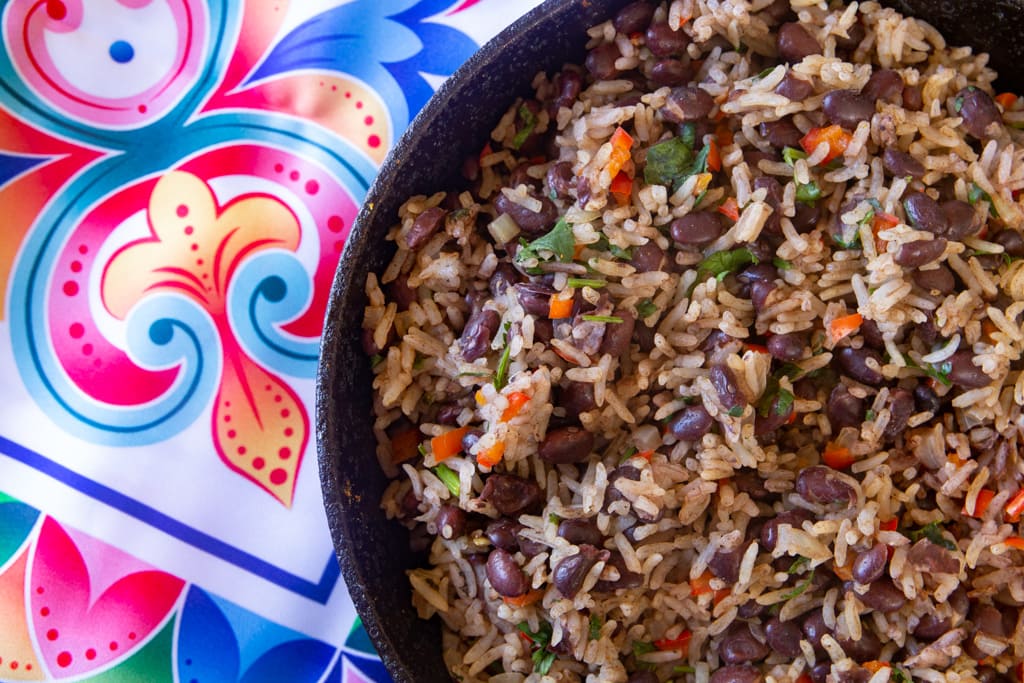
Gallo Pinto
I’ll go ahead and make a bold statement here- if you go to Costa Rica and don’t eat gallo pinto, the trip doesn’t count.
Gallo pinto might very well be the most beloved dish in all of Costa Rica. Made with leftover white rice and black beans combined with finely chopped onion, red pepper, and cilantro and seasoned with Salsa Lizano.
It’s vegan, it’s vegetarian, it’s easy to make and it’s everyone’s favorite. Don’t miss it! It is a most popular Costa Rican breakfast recipe.
How to order: Quiero un gallo pinto por favor. (Con huevo, con tortilla, con natilla, con plátanos, con café, con pan tostado, etc).
Related post: What Is Salsa Lizano From Costa Rica?
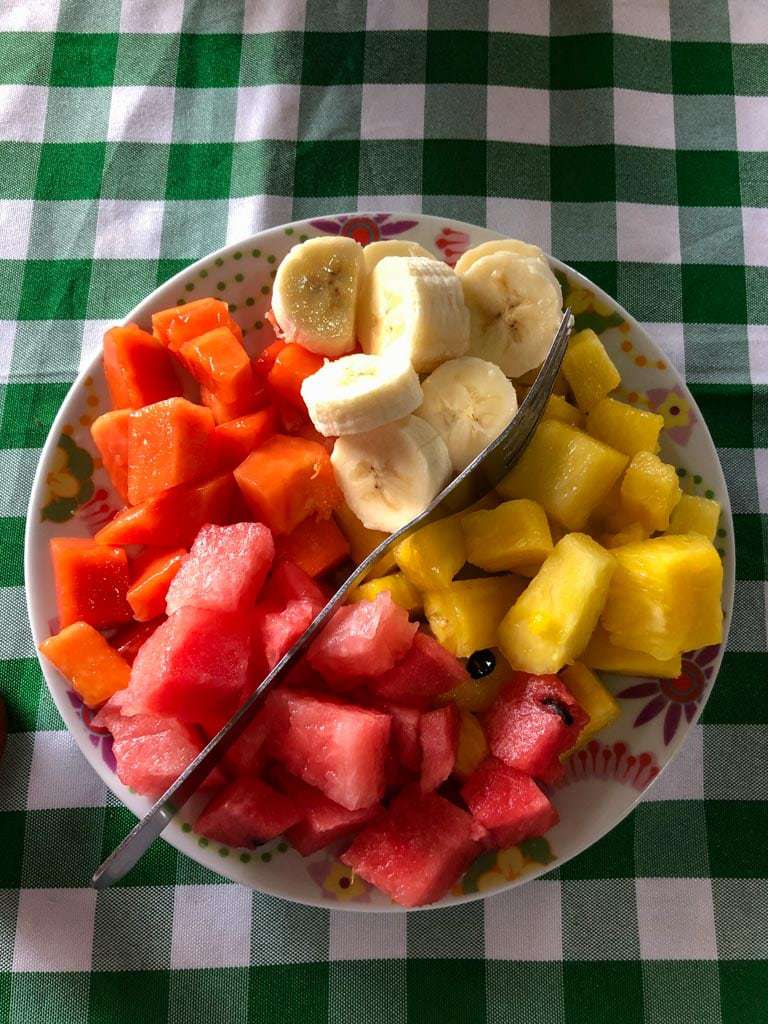
Fresh Fruit Plate
There are a myriad of delicious fruits in Costa Rica, and breakfast is the perfect time to experience them. Papaya, pineapple, watermelon, banana and melon are the most common on a breakfast fruit plate in Costa Rica. The fruit plate is usually served before the main meal of gallo pinto and is often served with homemade juice.
How to order: Quiero un plato de frutas por favor.
Related post: Guide To Costa Rican Fruit
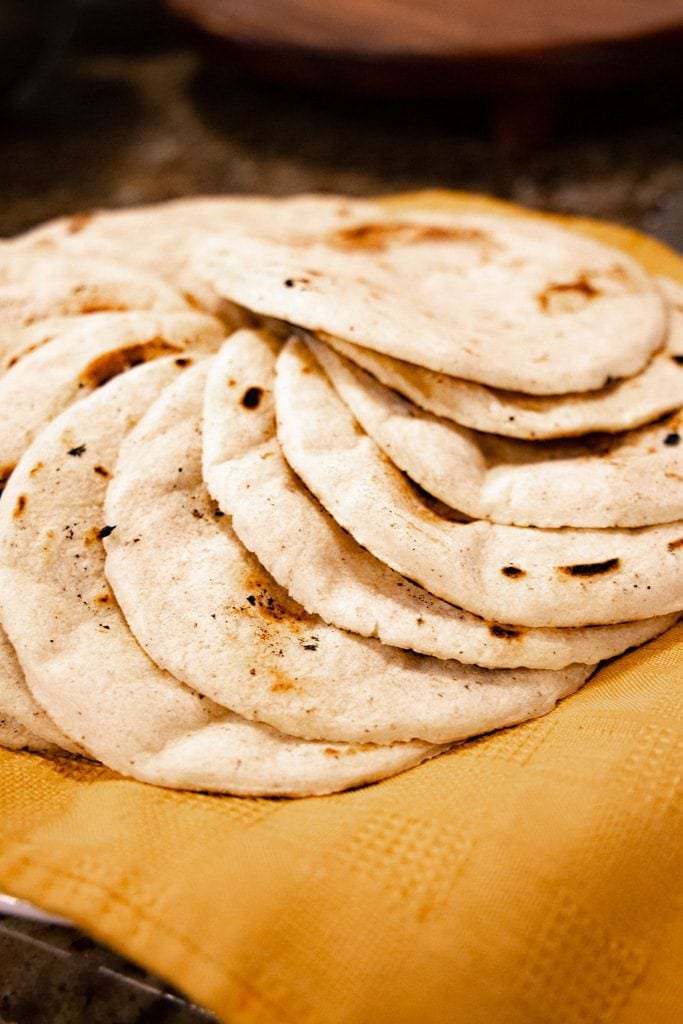
Homemade Tortillas
Like most other countries across Latin America, Costa Ricans love homemade tortillas- always corn tortillas as flour tortillas are not popular here.
Tortillas accompany almost every meal but don’t always expect homemade tortillas. The beloved factory-made TortiRicas are often used in restaurants and sodas, and I am not going to lie- they are the best commercial corn tortillas on the planet.
You’ll have to specifically ask if there are homemade tortillas on hand. If there are- eat them immediately, preferably with natilla!
How to order: ¿Tienen tortillas caseras? (Do you have homemade tortillas?)
Related post: Basic Spanish Phrases For Travel – Costa Rica
Costa Rican Coffee
You can’t go to Costa Rica and not try the café! Costa Rican coffee is often made using a chorreador. Coffee is placed at the tip of what looks like a sock, and boiling water is poured over the top.
Popular Costa Rican coffee brands include 1820, Cafe Rey, and Cafe Britt. Each region has its own locally produced coffee too, so make sure you try it everywhere you go!
RELATED POST: Espiritu Santo Coffee Tour
Arepas
Arepas are like small Costa Rican pancakes. Made with flour, egg, and milk, they are compact as opposed to light and fluffy. They are sand dollar in size and often served with maple syrup, Costa Rican honey, dulce de leche, or sweetened condensed milk. You will most often find these in a breakfast buffet as opposed to on a menu- but you never know!
Traditional Costa Rican Lunch
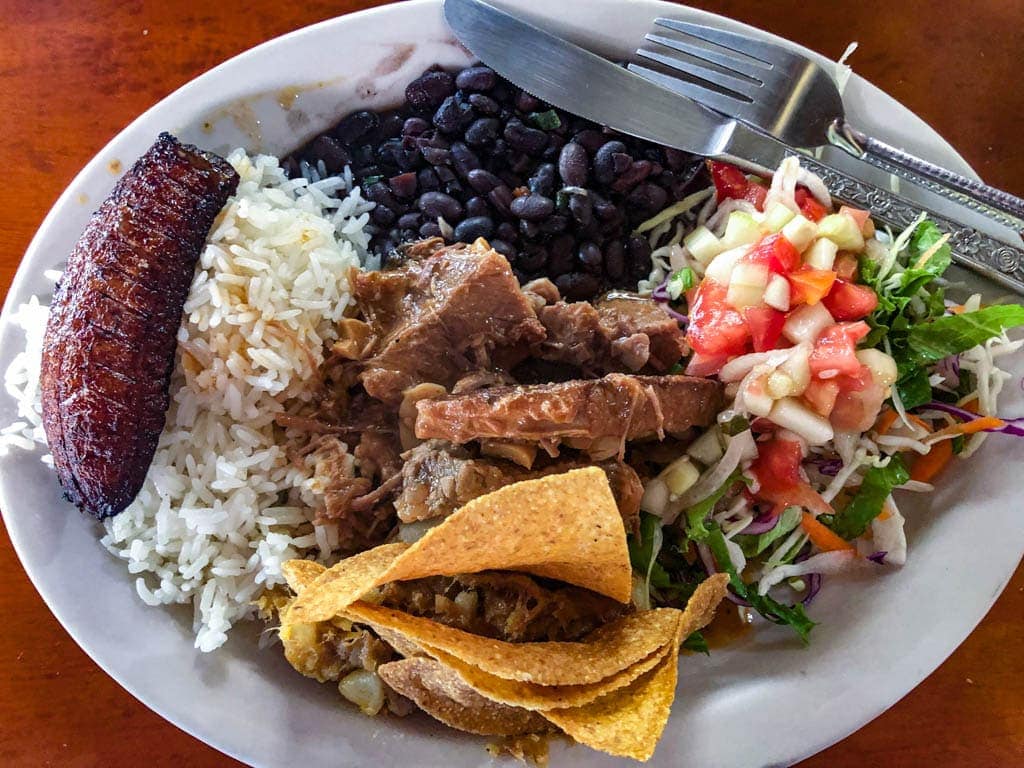
Casado
The Costa Rican casado is the quintessential Costa Rican lunch. You’ll see signs at small sodas advertising platos ejecutivos, which means they serve a mean casado at a good price.
The casado is a plate with a flavorful variety of foods, traditionally including Costa Rican white rice, black beans, salad, chimichurri, picadillo, plantains, and often comes with a natural juice. On the table, you’ll find Salsa Lizano and often a chilera– a spicy fermented homemade vinaigrette.
My all-time favorite casado is with carne en salsa– if you get to try it please do! It’s so good!
How to order: Quiero un casado de… (pescado, pollo, carne, bistek, chuleta, etc)
Related post: Casados Costa Rica- the complete guide
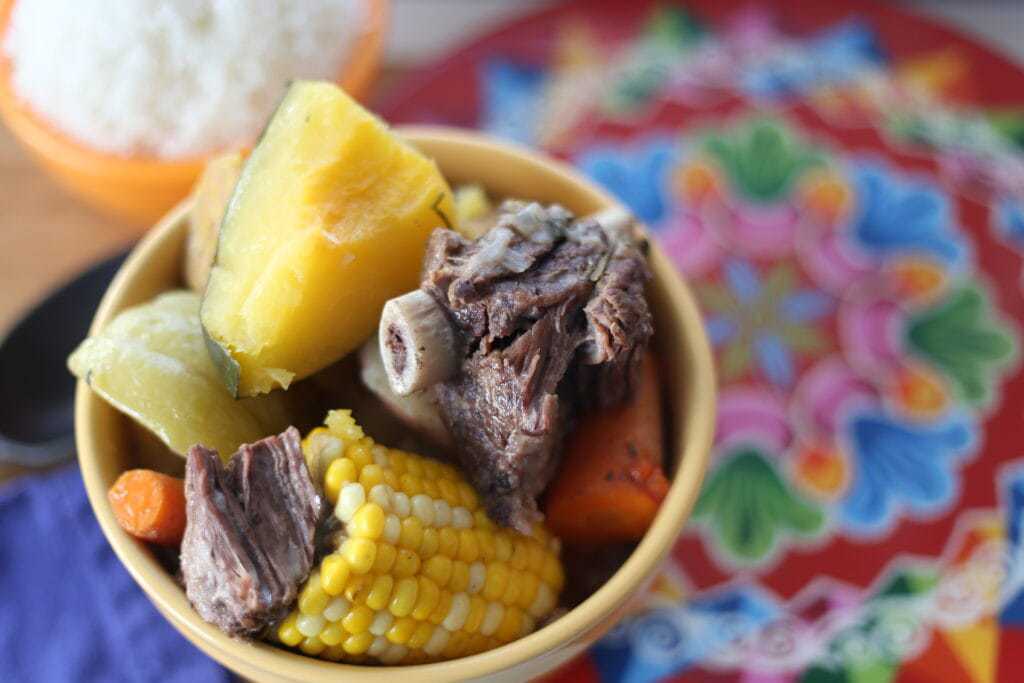
Olla de Carne
This traditional Costa Rican vegetable beef stew is hearty, healthy, and extremely popular during the rainy season. Often served with white rice, Costa Rican tortillas, and a natural juice, if you have the chance to eat this traditional dish in Costa Rica-don’t miss it!
Note- this dish might not be on the menu, but you may be able to ask if they have it. Prepare for some looks- most non-ticos don’t ask for this soup by name. If you are in La Fortuna, Soda La Parada almost always has this on the menu and it’s delicious.
Related post: A Foodie’s Restaurant Guide To La Fortuna, Costa Rica
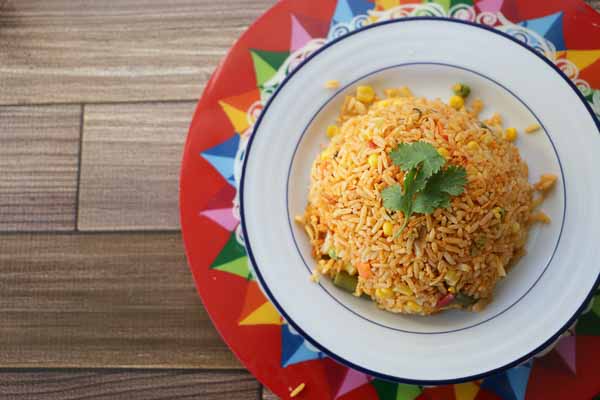
Arroz con pollo
Arroz con pollo is a Latin American staple, which literally translates to rice with chicken. It’s an easy go-to food for eating out in Costa Rica for lunch. It’s also the quintessential party food- jokingly named arroz con siempre.
Served with papas (either French fries or potato chips) and salad, this dish is a good marker to determine how expensive a restaurant is. The dish can range from 2,000 colones to 15,000 colones.
RELATED POST: Saving Money In Costa Rican Restaurants
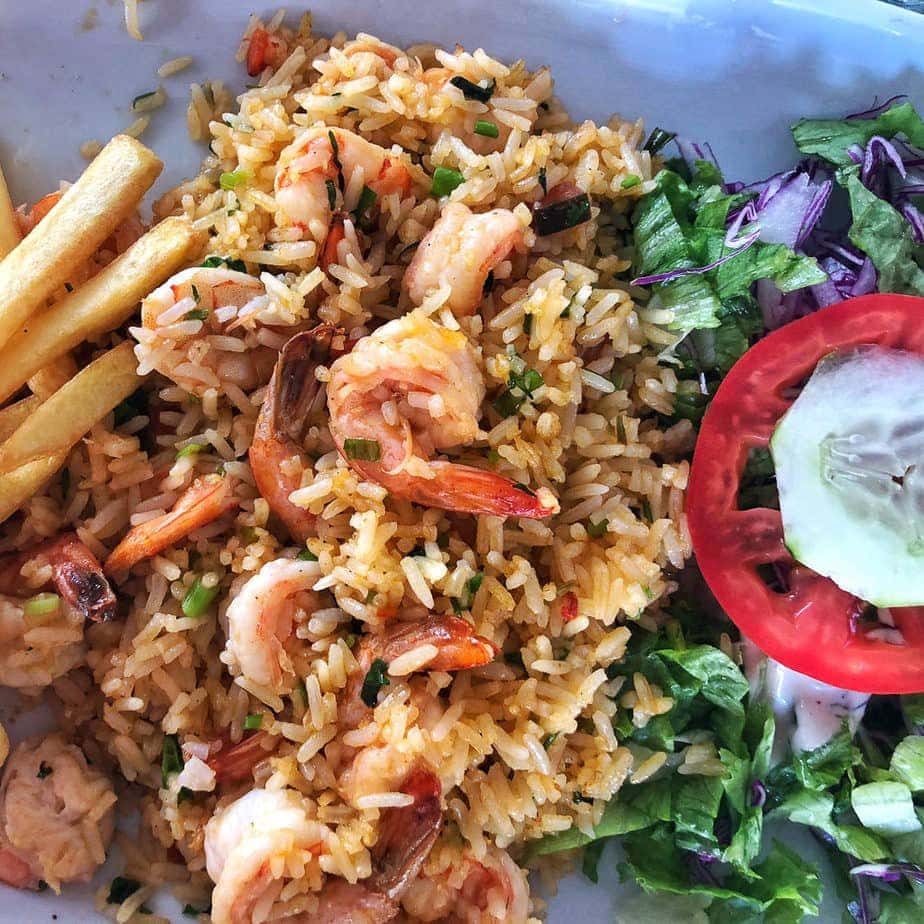
Arroz con camarones
Arroz con camarones is pretty much like arroz con pollo except with shrimp. Don’t miss an opportunity to eat this near the beach.
Related post: Where To Eat In Jaco Costa Rica
Bistec Encebollado
This tico version of a steak consists of thin cuts of steak (similar to flank steak) and boasts a rich flavor of caramelized onion and copious amounts of Salsa Lizano.
It is made by caramelizing onion and garlic in a pan, before adding in the steak which is then cooked in the onions and eaten together. Often served with white rice, black beans, and a fresh salad or with French fries.
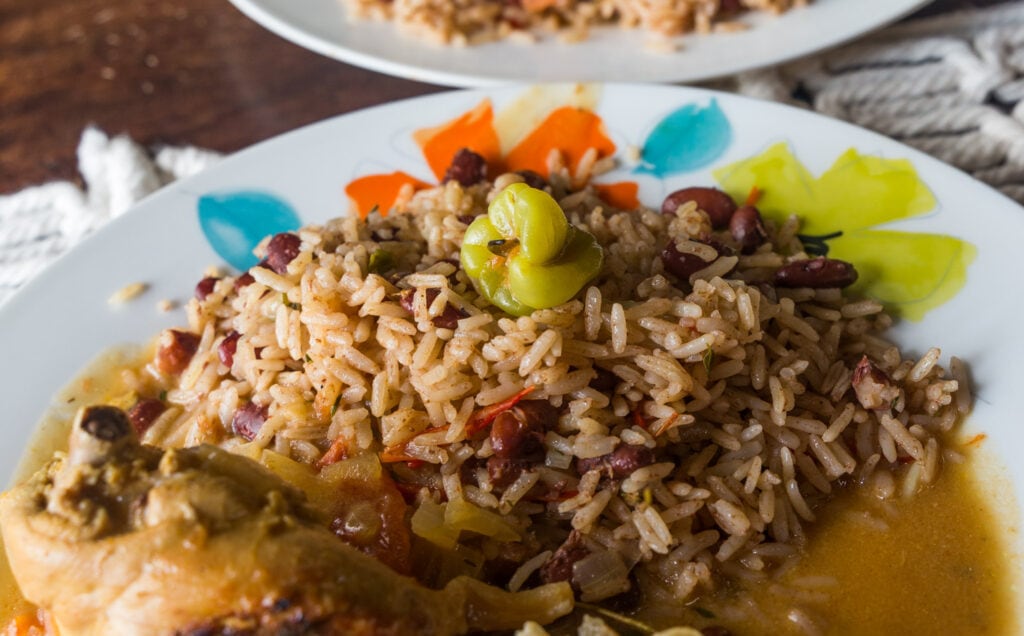
Rice and Beans
This Afro-Caribbean dish is popular in the province of Limon. It is essentially gallo pinto with the beans cooked in coconut milk instead of water. There’s a little kick to it as well, as the rice is cooked with habanero pepper. Make sure ot serve it with a side of Caribbean chicken!
Whole Fried Snapper
Pargo rojo or red snapper is a popular fish that is fried whole and served with French fries and salad. Ticos love it- but know that if you order it the entire fish will be on the plate- eyes, head, and all.
Popular Costa Rican Appetizers
A quick note about “dinner” in Costa Rica. Most ticos do not have a formal dinner- the main meal is lunch. Dinner is usually a more formal affair- for a wedding or party, or when eating out.
Then between 3 and 6 in the afternoon people drink coffee- which really means drinking traditional Costa Rican coffee (or tea or agua dulce) and eating a pretty large snack (see snack food section). This means people aren’t usually that hungry in the evening.
People will often go out and have a beer or cocktails with friends and then enjoy a boca- a small plate or appetizer. You may see on a menu the same plates offered in a full size or boca size- “boca” means mouth, or a smaller version.
Bocas are a great way to try lots of different Costa Rican cuisines in one sitting. They cost usually under $5 and are the perfect size for sharing or for eating multiple over the course of an evening. Originally, a boca was complementary with each cocktail order- the idea being that people wouldn’t get too tipsy while out and about. That custom has largely been lost over the years.
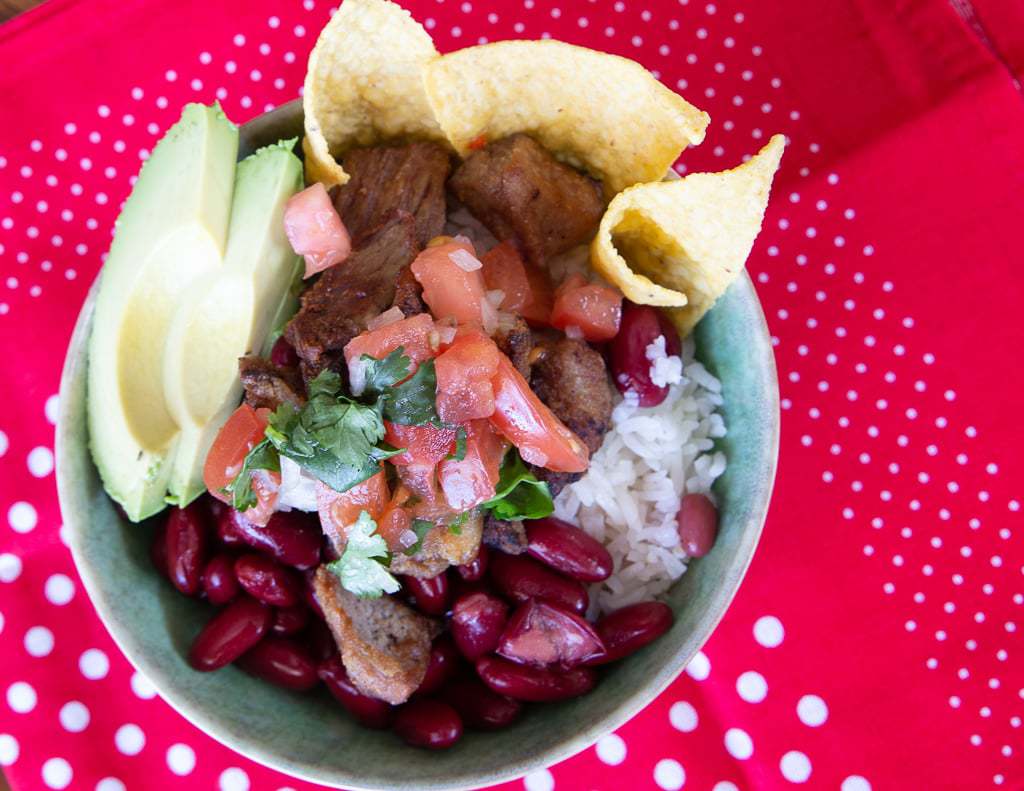
Costa Rican Chifrijo
Born in a small bar in the capital of San Jose, the chifrijo has become somewhat of a national obsession in the last 15 years.
Chi-frijo combines chicharrones with frijoles, white rice, chimichurri (also known as pico de gallo) and often slices of ripe avocado all served with some corn tortilla chips. It’s delicious.
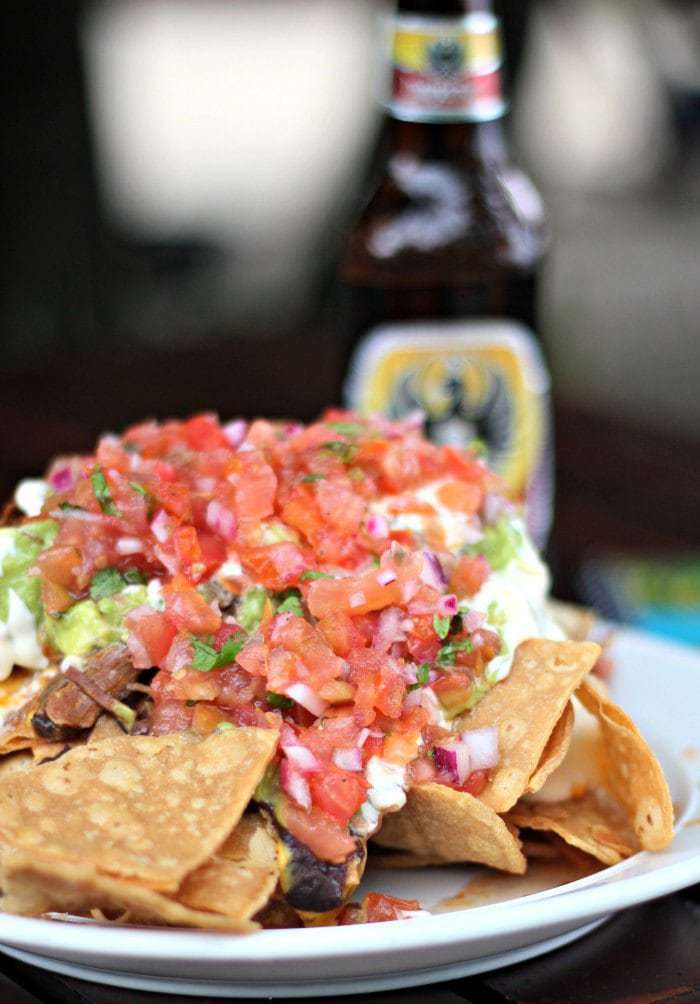
Costa Rican Nachos
Everyone loves nachos! Costa Rican nachos are traditionally served on individual, freshly fried corn tortilla triangles. Refried black beans (frijol molido) are topped with shredded beef, shredded chicken, or carne en salsa. Costa Rican white cheese comes next, with a side of chimichurri. I adore them.
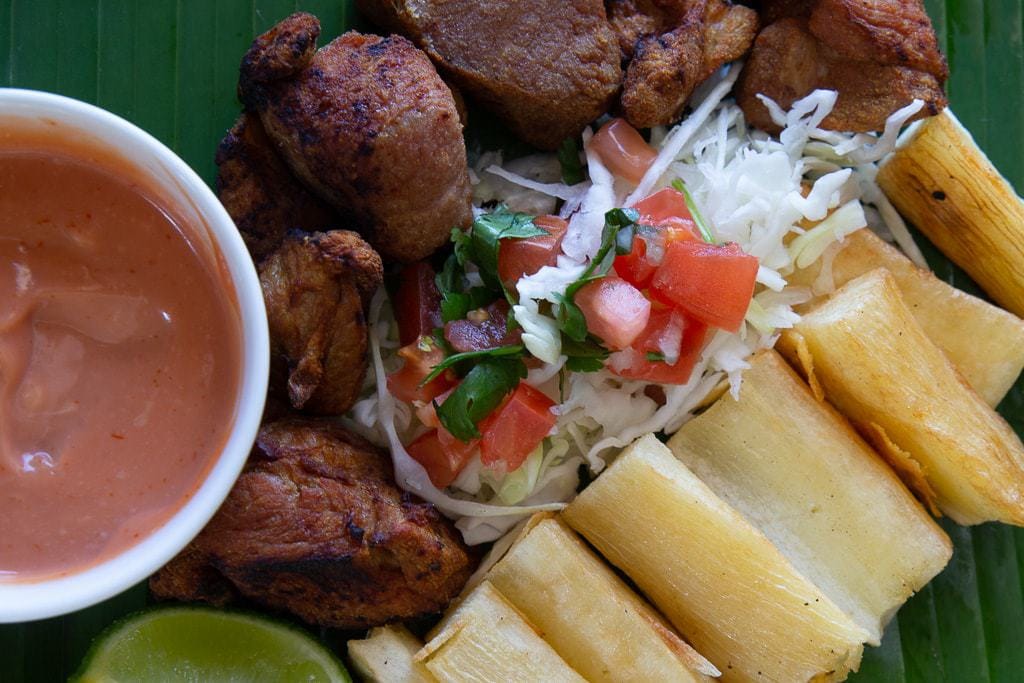
Chicharron (Fried Pork Belly)
Costa Rican Chicharron is fried pork belly marinated in lime, salt, and achiote coloring. It’s served hot with boiled yucca, chimichurri, and tons of lime.
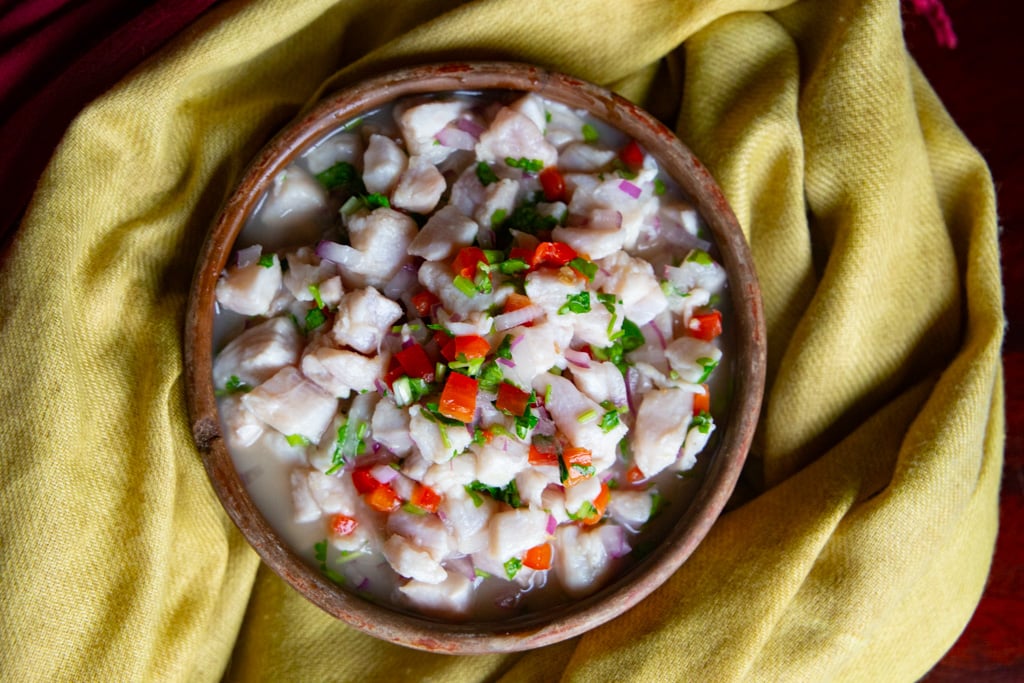
Ceviche
Ceviche is raw fish or shrimp mixed with red pepper, onion and cilantro and marinated in lime until “cooked” through. It’s hugely popular in Costa Rica as a boca, and served often with tortilla chips, ketchup and mayonnaise.
A recent phenomenon is the caldosa, which is ceviche poured into a bag of Picaritas (like a Costa Rican Dorito) and eaten on the street right from the bag.
You might also like: Traditional Costa Rican Ceviche (white fish)
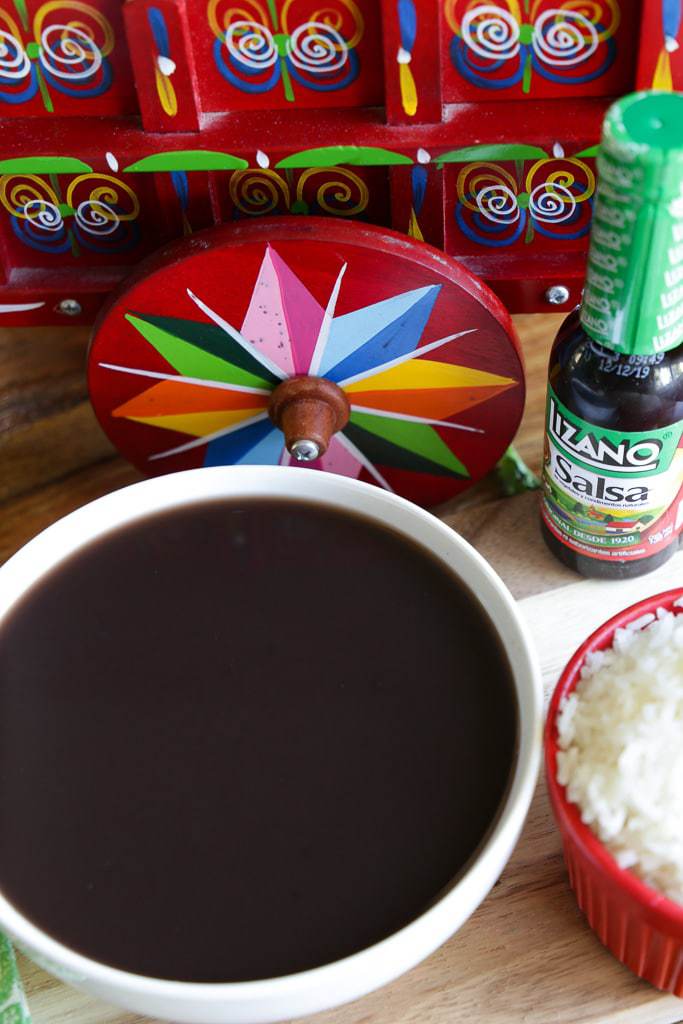
Sopa Negra
This is a black bean soup, generally sans beans. Served with white rice, a hard-boiled egg and Salsa Lizano, this is the perfect hangover cure. (So I’ve heard).
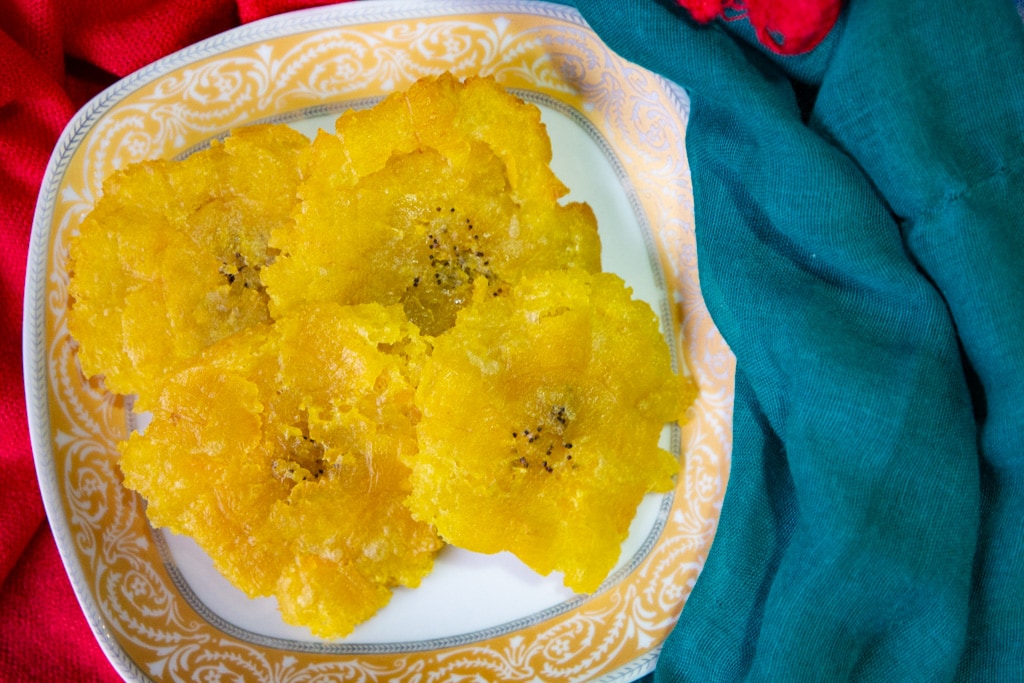
Patacones
Patacones are green plantains sliced into chunks and lightly fried. They are then smashed down flat and refried. Generally served with chimichurri and refried black beans, in recent years either pink sauce (salsa rosada) or guacamole are making an appearance on the plate.
Patacones are also topped with ceviche, shredded beef, or chicken as a sort of fried plantain nacho.
Popular Costa Rican Street Foods
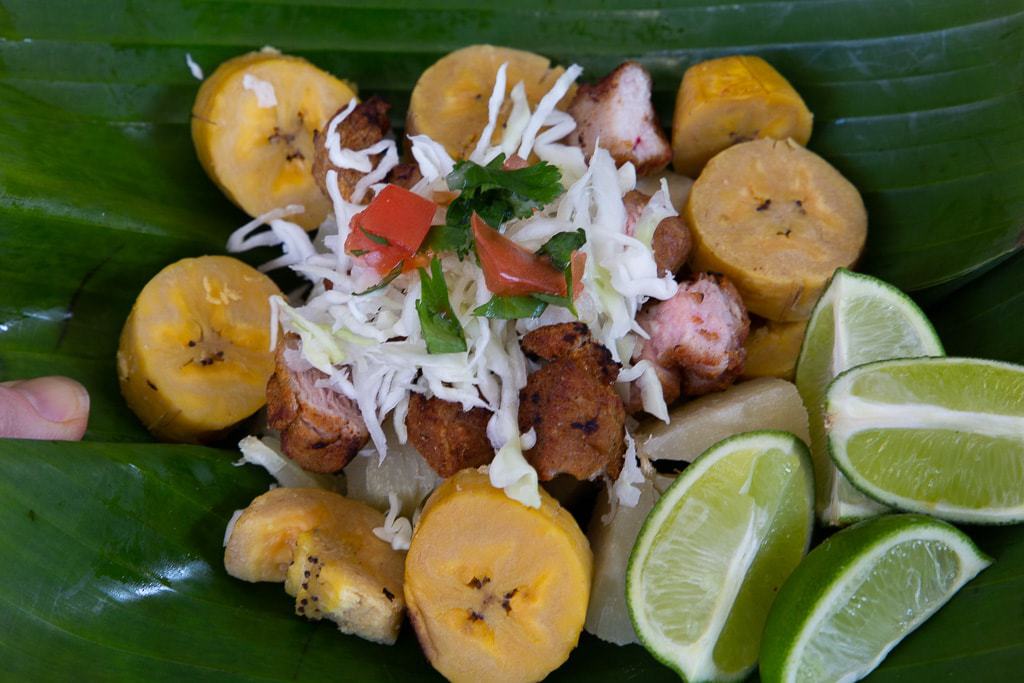
Vigoron
This popular street food is commonly enjoyed along the coast (Puntarenas is LEGENDARY for this dish) and often served cold. It consists of chopped cabbage, tomatoes, onion, and chicharrones that are made into a meat salad. Sometimes, other ingredients such as chicmichurri and boiled yuca as well as boiled green plantains are added to the mix.
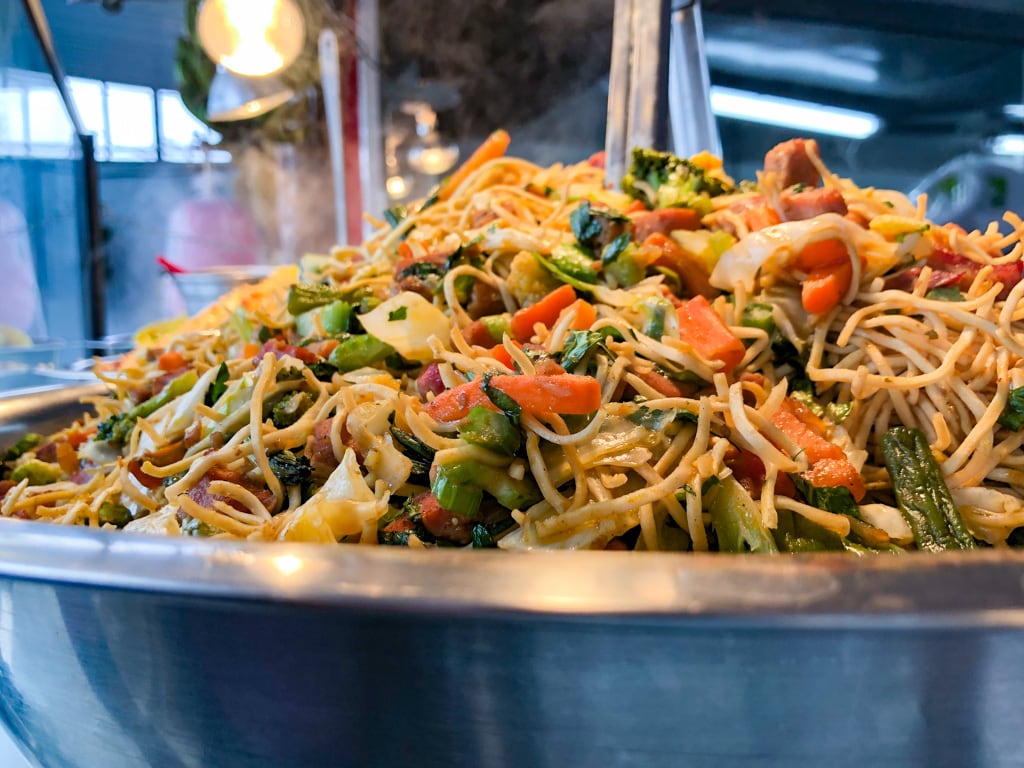
Chop Suey
Costa Rican chop suey is made with chow mein noodles, a mixture of Salsa Lizano and other spices, all tossed with chicken, beef and seafood. Almost every festival has a stand selling chop suey in plastic containers with a fork- perfect for wandering and eating. There is also a chop suey soup that is made more traditionally in Costa Rican homes.
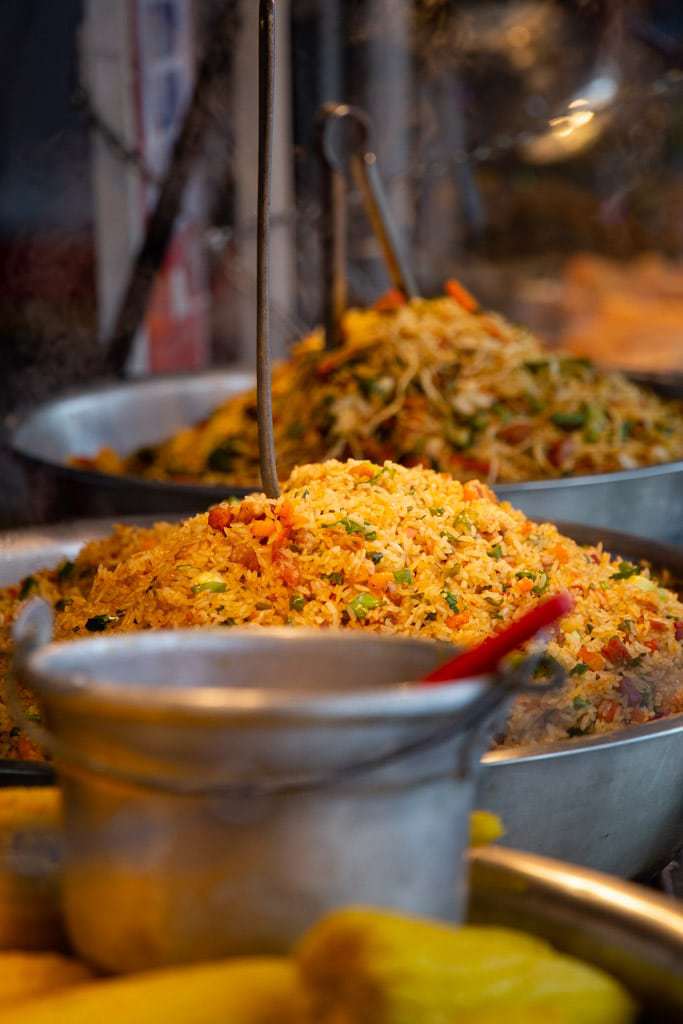
Arroz Cantones
A good example of the fusion and richness that immigrants have brought to the country and one of the most popular foods in Costa Rica is this Tico version of Chinese fried rice.
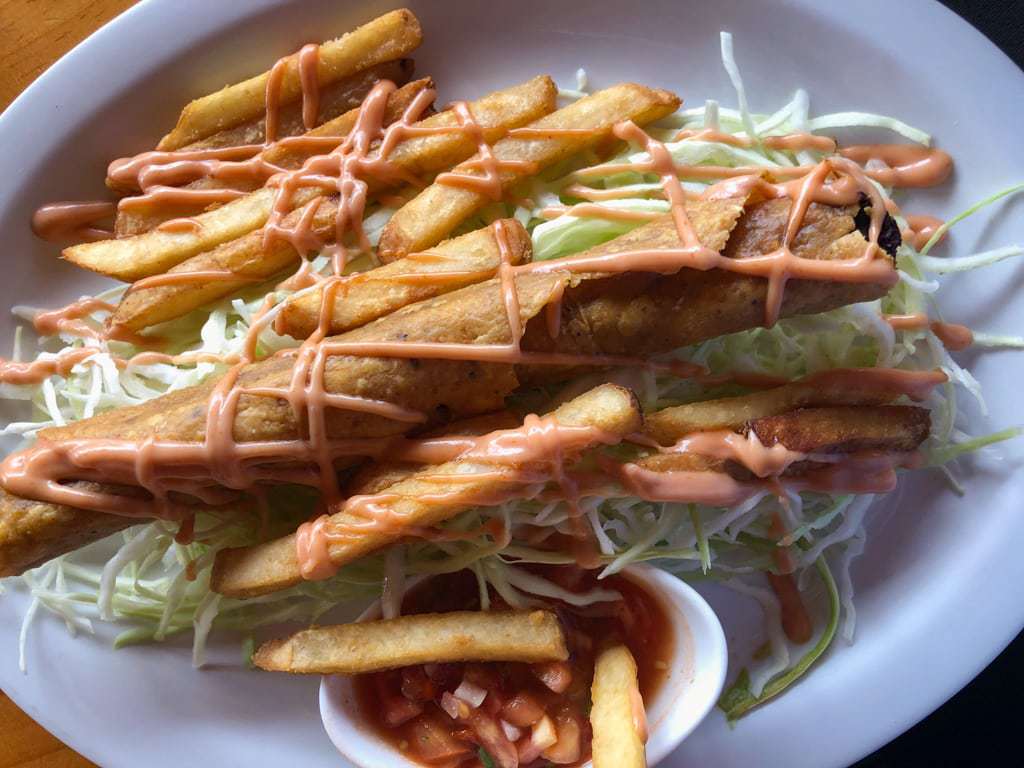
Costa Rican Taco
A Costa Rican taco is basically a Mexican flauta with different toppings. A corn tortilla is stuffed with shredded beef and then fried. It’s pretty much like a Mexican beef flauta.
We then cover the whole thing with French fries and cabbage and bathe it in ketchup and mayonnaise (or in some places pink sauce).
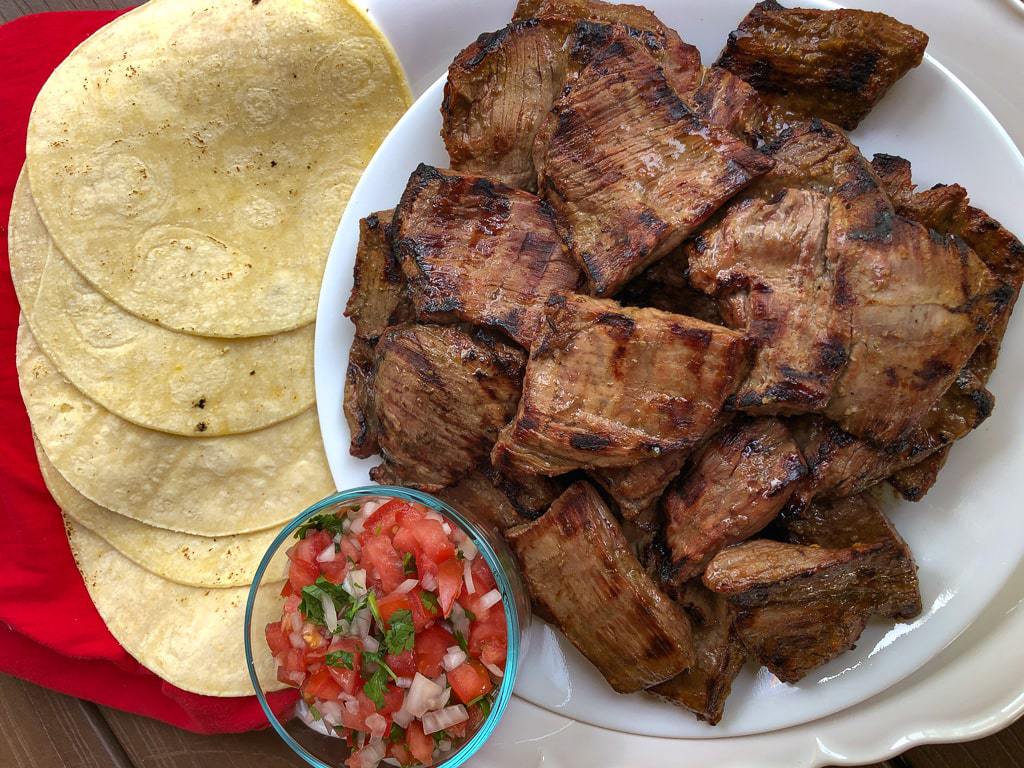
Carne Asada
You won’t find carne asada on any menu- it’s a traditional Costa Rican potluck/party/excuse to drink cocktails. Steak is grilled, tortillas are consumed, chimichurri is inhaled by the gallon.
There are liters of Salsa Lizano tons of laughs and they go all night. If you get invited to one- do not pass go, do not collect $100, just experience it!
Favorite Costa Rican Snacks
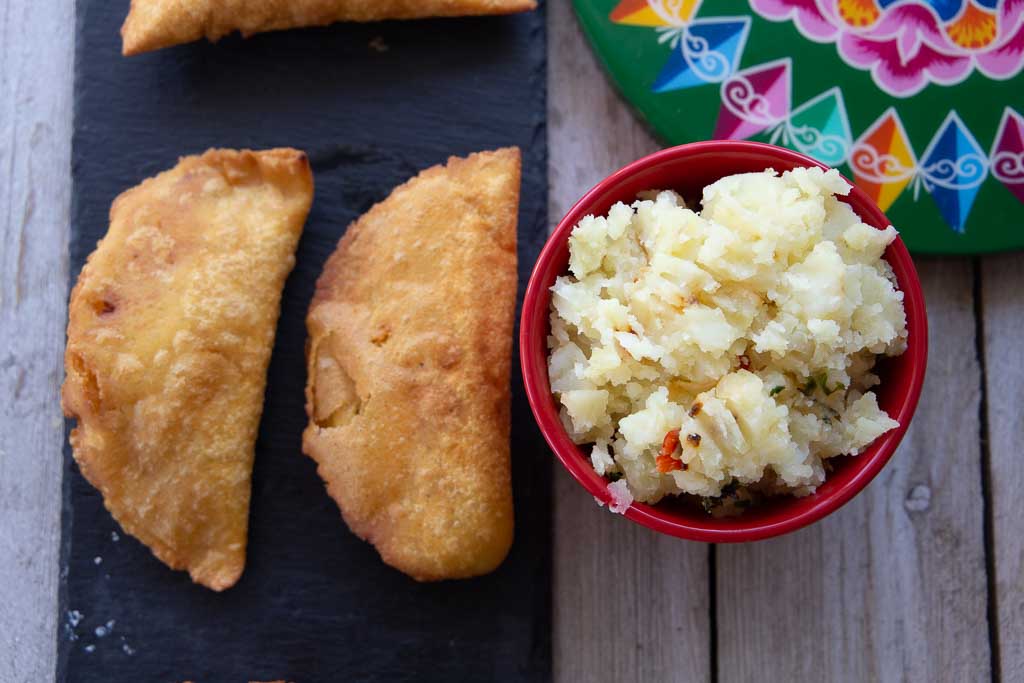
Empanadas
There are two types of empanadas in Costa Rica- sweet and savory. Savory empanadas are as popular as a street food as they are made in homes. Meat, cheese, beans, potato, or fish are stuffed into a corn masa dough and fried until hot and crispy.
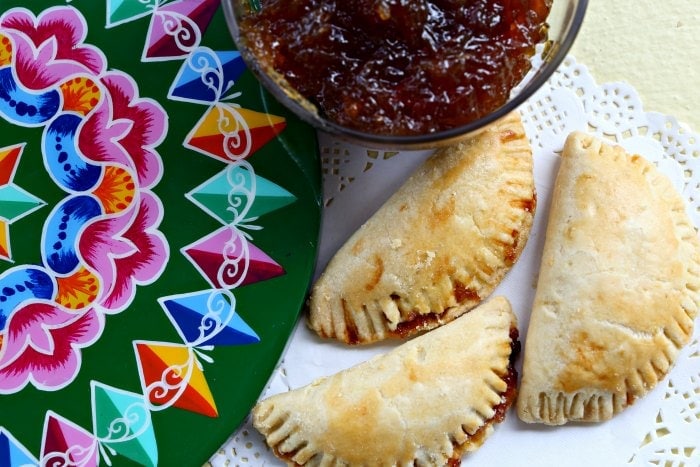
Sweet empanadas are served for breakfast or with afternoon coffee. Made from a butter and flour dough, they are generally stuffed with fruit jams such as pineapple, guayaba, the traditional chiverre or dulce de leche.

Tamales
There are lots of types of tamales in Costa Rica! As in the rest of Central America, the Costa Rican tamale is a traditional pork tamal is made and eaten traditionally around the Christmas holidays. Making tamales is a family affair.
The tamal de masa is found year-round, and is generally made on a wood stove. You will find this in tico homes as well as bakeries.
Lenten time has a tamal mudo, which is a tamal filled with either frijol molido or mashed potato and eaten during Holy Week.
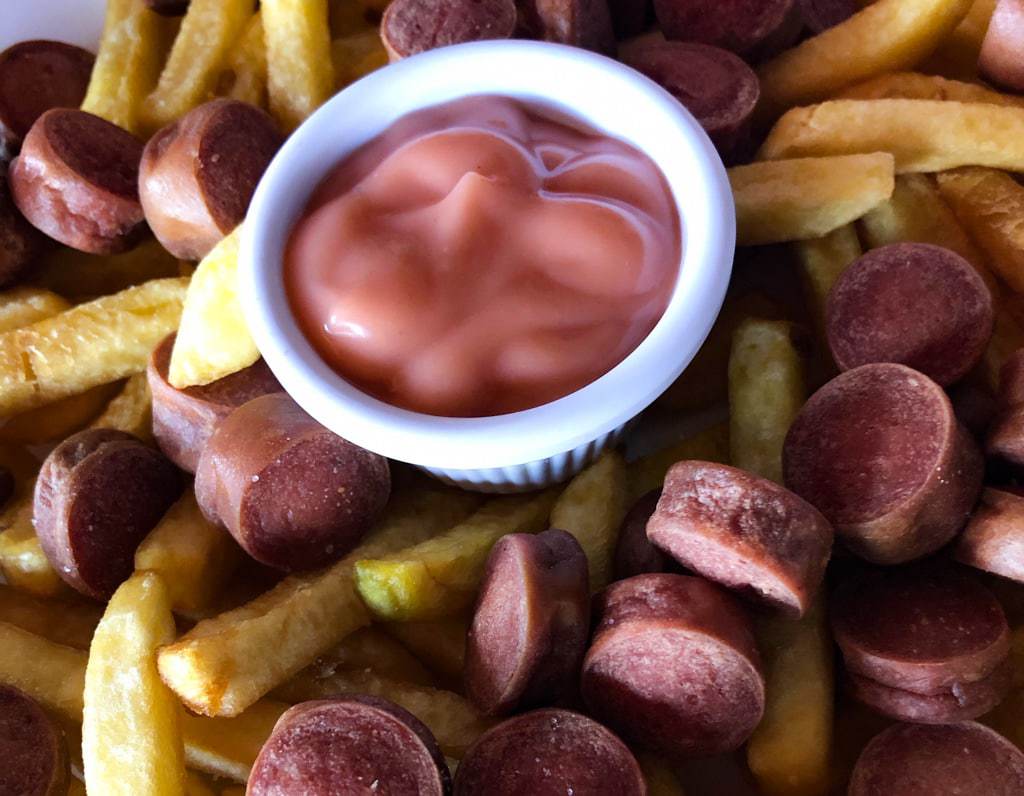
Salchipapa
Another popular Costa Rica food is basically hot dogs cut up and fried with French fries. Salsa rosada or ketchup and mayo are served on the side and the only utensils provided are toothpicks.
Gallos
Gallo literally translates to rooster, but Costa Ricans are not sitting around eating roosters. Gallos are small portions of different foods such as picadillo, plantains, cheese, sausage or really anything else you can think of served on a tortilla- usually with coffee, agua dulce or juice.
Costa Rican Desserts
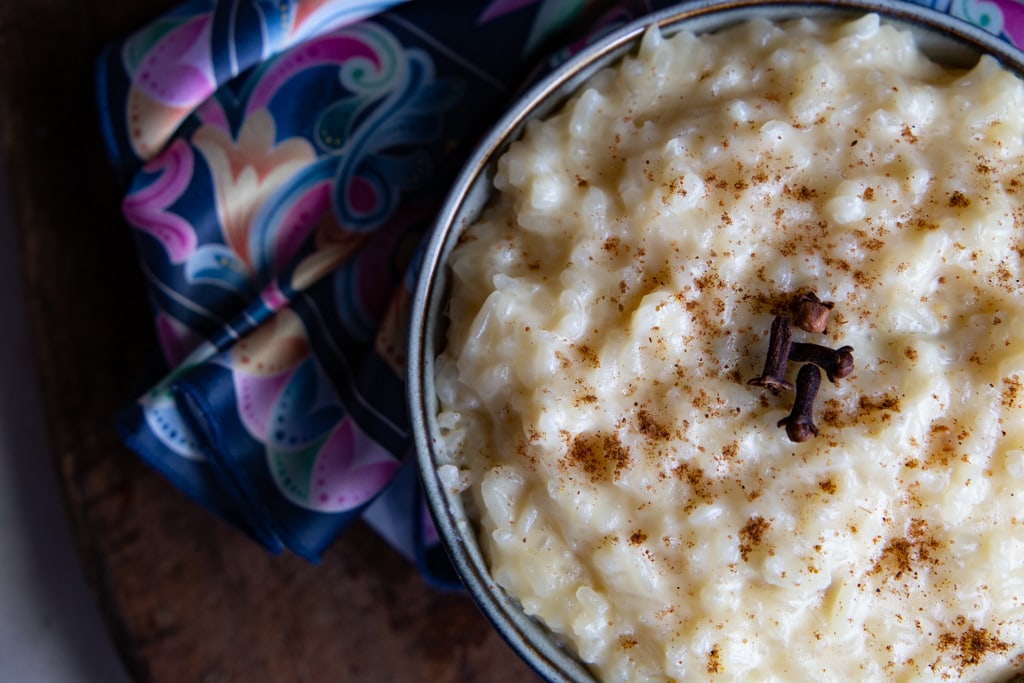
Arroz con leche
This milk rice is a creamy sweet dish, that is prepared with rice, cow’s milk and sugar. For seasoning, cinnamon is the top choice, but some also like to add raisins and vanilla.
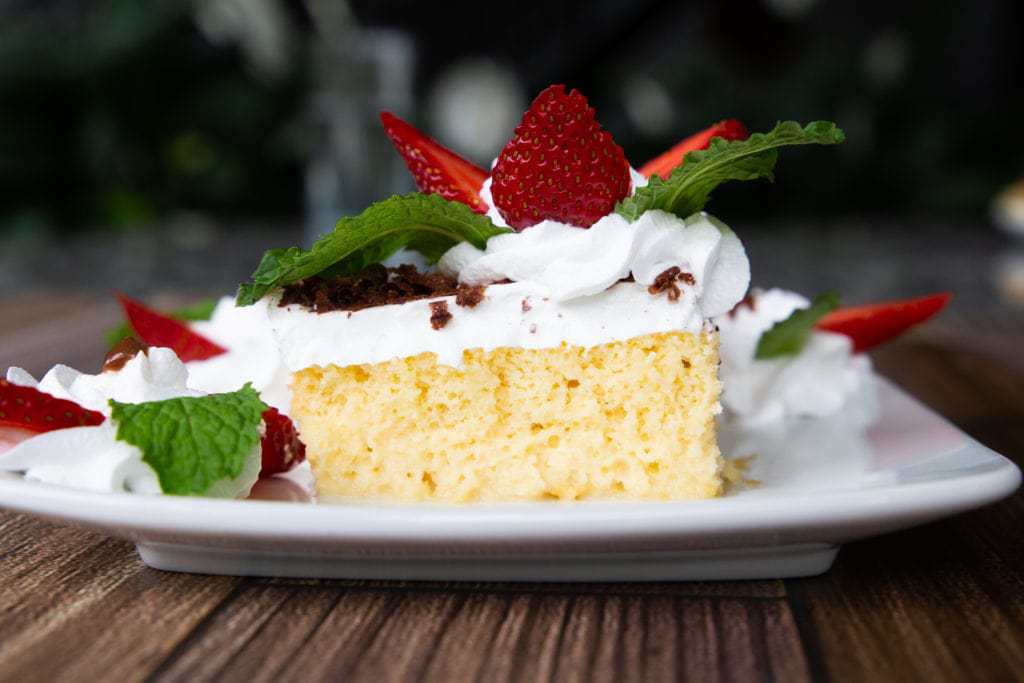
Tres leches
As the name indicates, this much-loved dessert is made with three different forms of milk. First, a simple cake is prepared, which then is cut in half and filled with some jam and dulce de leche and drenched in evaporated milk, condensed milk, and cream. To the top of the sweet delight, meringue is added on top.
Melcochas
Melcochas are little sweets made with sour cream and sugar cane, or the traditional Costa Rican tapa de dulce. They are very hard and very sweet and are found in small packages in grocery stores, bakeries, and bus stops throughout the country.
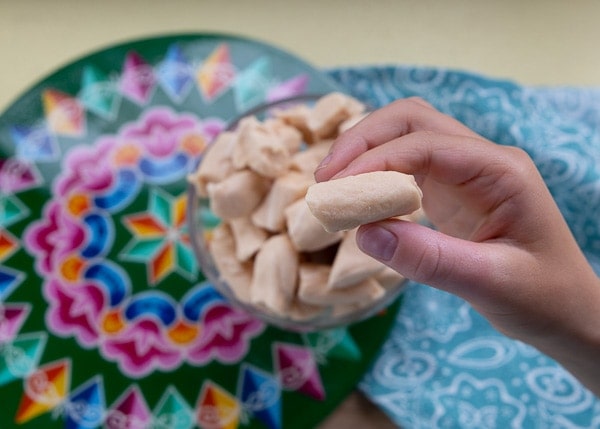
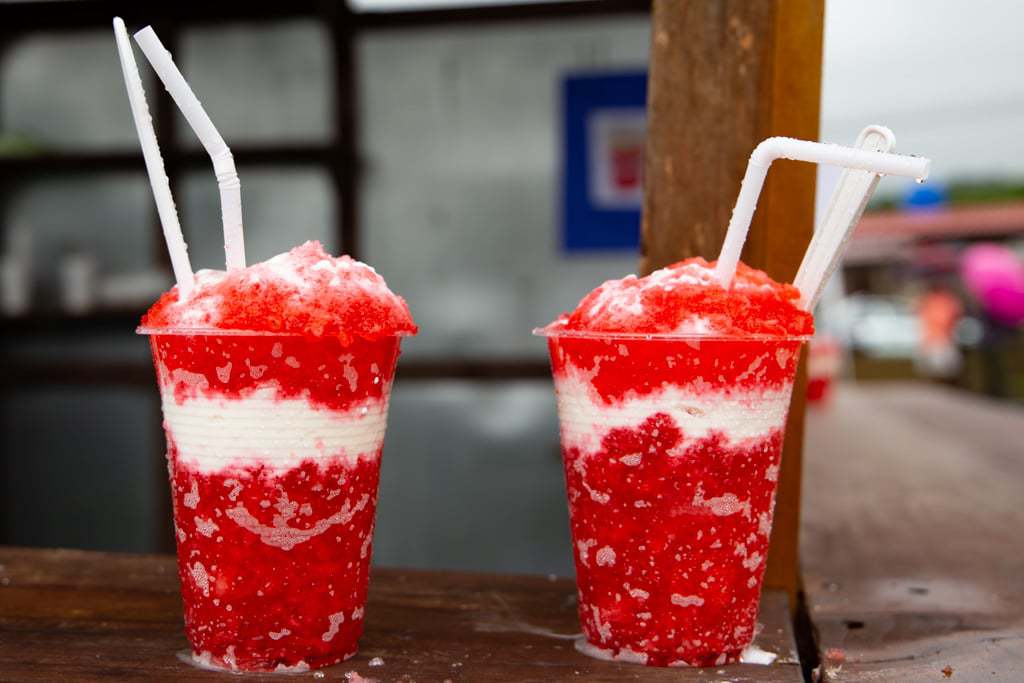
Copos
These sugary Costa Rican snow cones are the perfect refreshment on a hot day on the beach. To a glass of shaved ice, some condensed milk and syrup are added and the whole can be enjoyed topped with some marshmallows.
Costa Rican Drinks
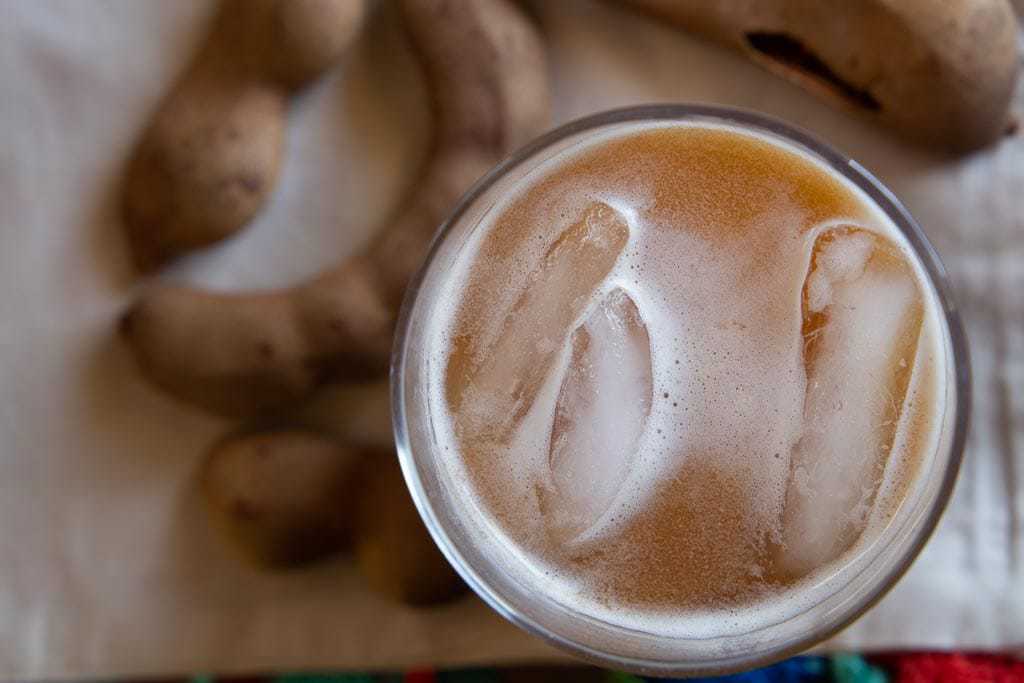
Homemade Juice (Naturales)
Given the huge abundance of fresh fruit throughout Costa Rica, it’s no surprise that homemade fruit juices are very popular.
It’s not common to have a juicer in the home, rather most all juices are made in the blender and then strained. You can find natural juices on almost every menu, and it’s common for a natural juice ot be included in a lunch meal.
Popular juices include tamarindo, guayabana, blackberry (mora- my absolute favorite), chan, mango, orange, pineapple, passion fruit, star fruit, guava, and lemonade- among many others. If you are in the grocery store, check out the hugely popular Dos Pinos boxed fruit juices which are made in-country, as well as the Tropical line of bottled juices which ticos love.
Check out our popular Tropical Rum Punch Cocktail Recipe
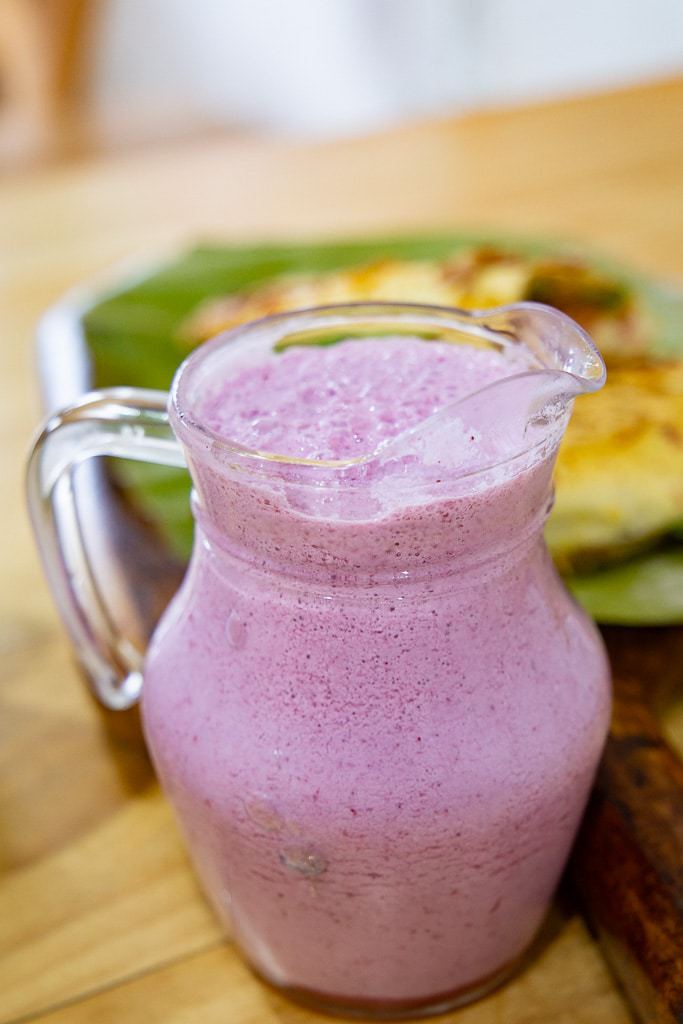
Smoothies (Batidos)
Practically every time I talk to someone who has visited Costa Rica they say- oh, the smoothies! And it’s true. Fruit juice is blended with powdered milk (usually the hugely popular Leche Pinito) and ice and served in a huge glass.
Popular flavors include mate (chocolate), mora (again, my absolute favorite!), mango, guayabana, pineapple and strawberry.
You’ll also love our Costa Rican Piña Colada Recipe
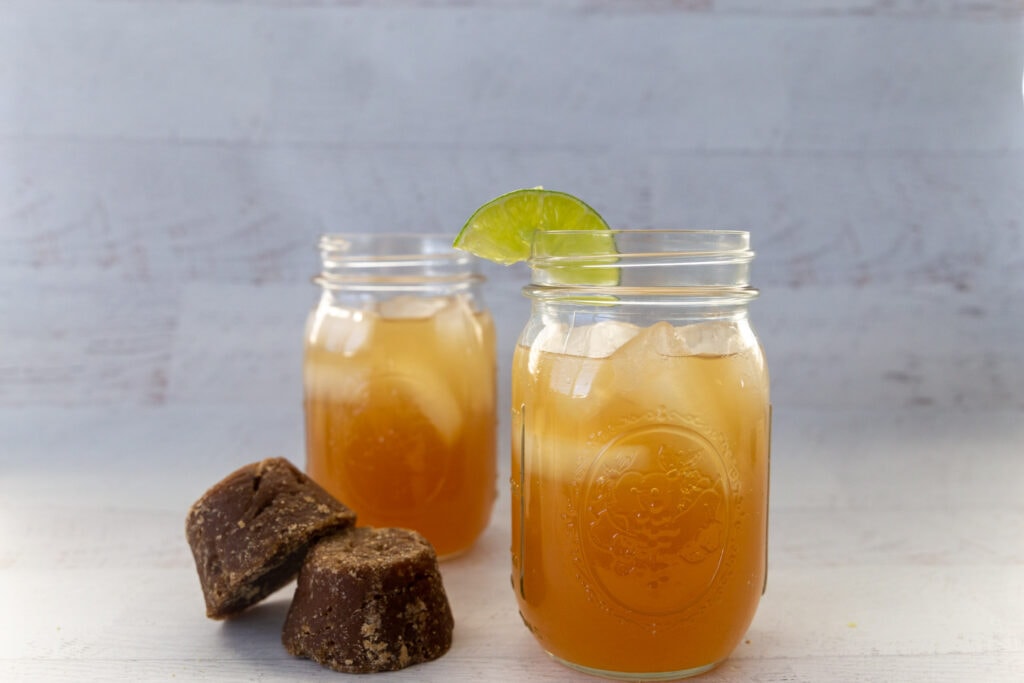
Agua de sapo
No, it’s not frog water, it’s a concoction of tapa de dulce, ginger and lime juice served ice cold.
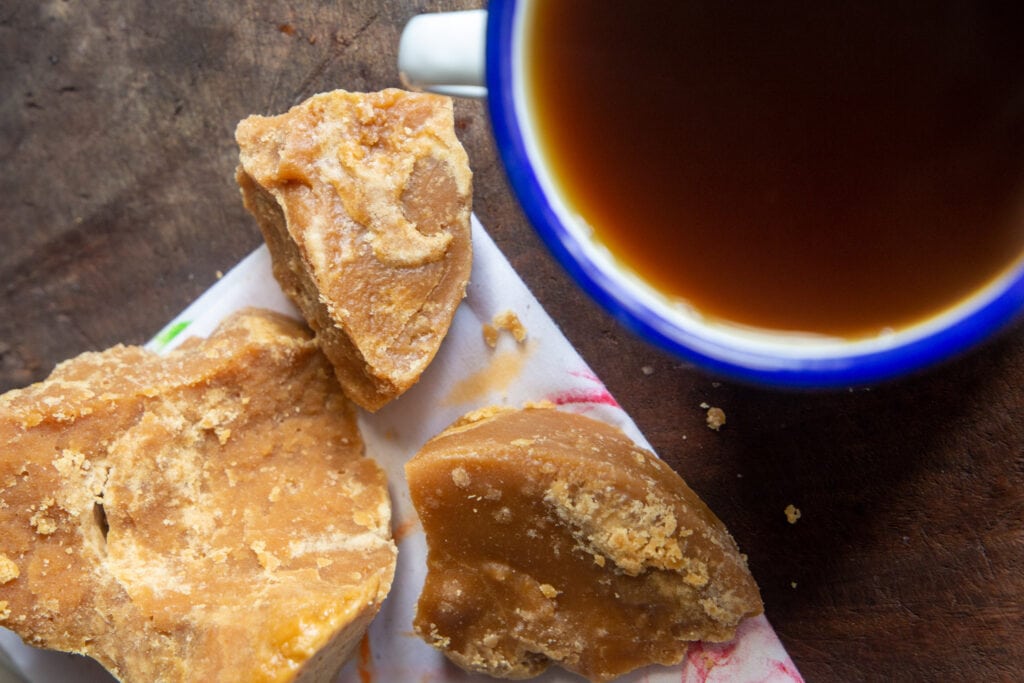
Agua Dulce
The tapa de dulce is Costa Rica’s answer to brown sugar. It’s an unrefined sugar cane that’s boiled and dried until caramelized. In Costa Rica, it’s then made into large circle bricks and sold to make agua dulce, cajetas, chiverre jams, melcochas, coconut honey, and more.
The tapa de dulce is found in almost every home to make agua dulce, a dark-colored sweet drink made from brown sugar and boiled water. Popular among non-coffee drinkers and children, this is a uniquely Costa Rican flavor.
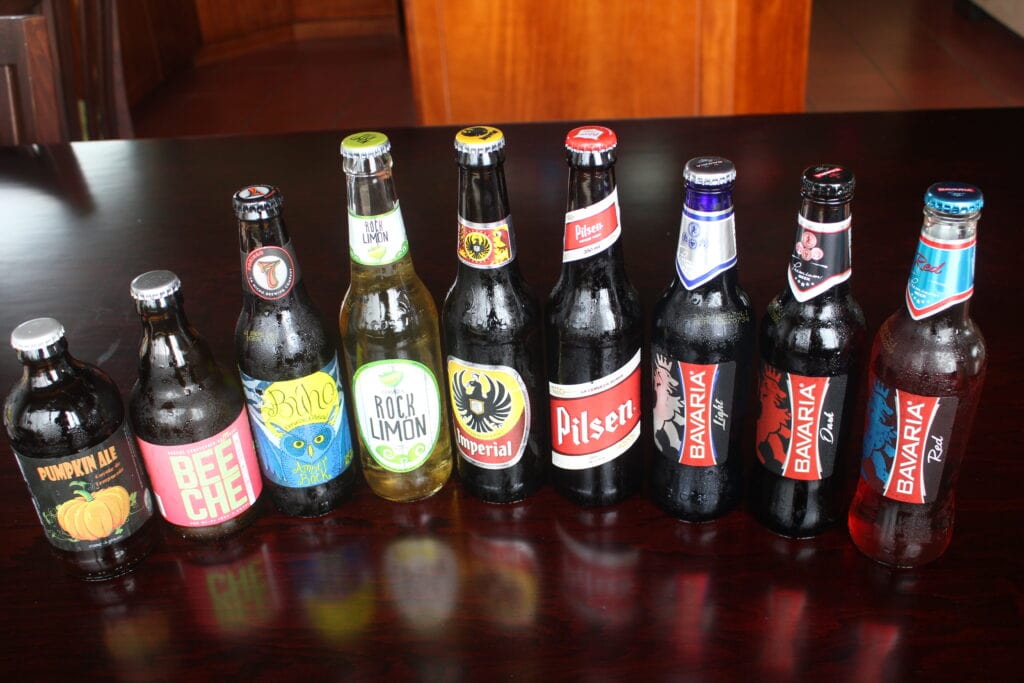
Beer
Beer- la cerveza, la birra, la fria, la chela– is a beloved drink among many many ticos. Popular beers include Imperial (also called la Aguila), Pilsen (la macha) and Bavaria.
Tons of microbreweries are popping up all over the country, but you must try an Imperial at least once while you are in Costa Rica!
Pin it!
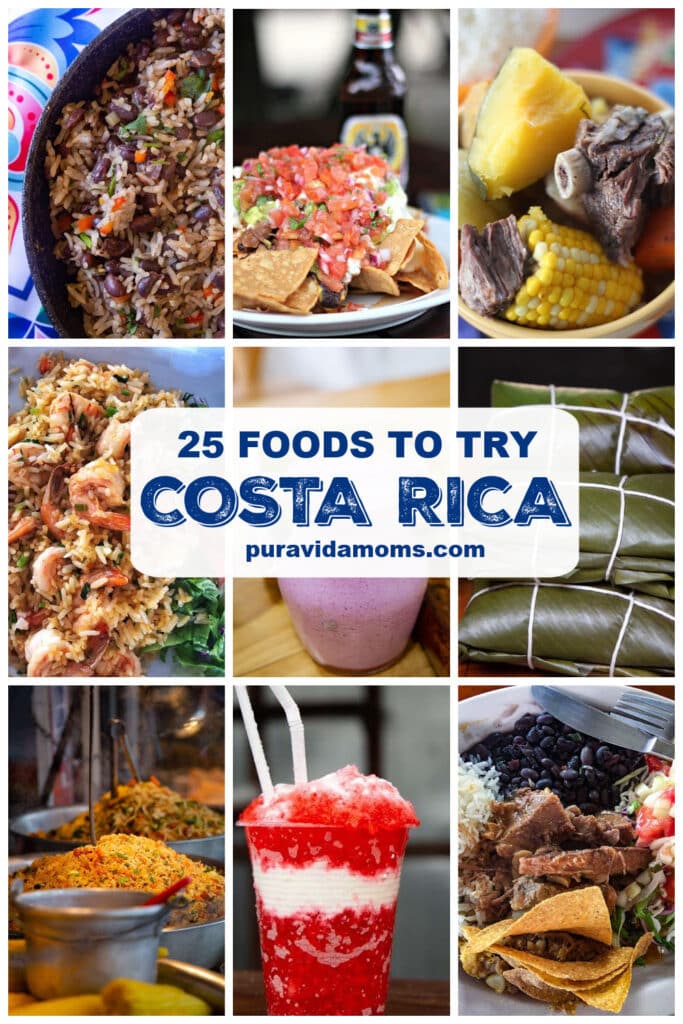

Christa Jimenez
Welcome! I’m Christa, a Spanish teacher married to a handsome Costa Rican and mother of two bilingual daughters. We’ve spent over 25 years living in and traveling to Costa Rica with our daughters, and this website is my love letter to all things Costa Rica- and to bilingual parenting too. You can read my full story here. Thanks for stopping by!



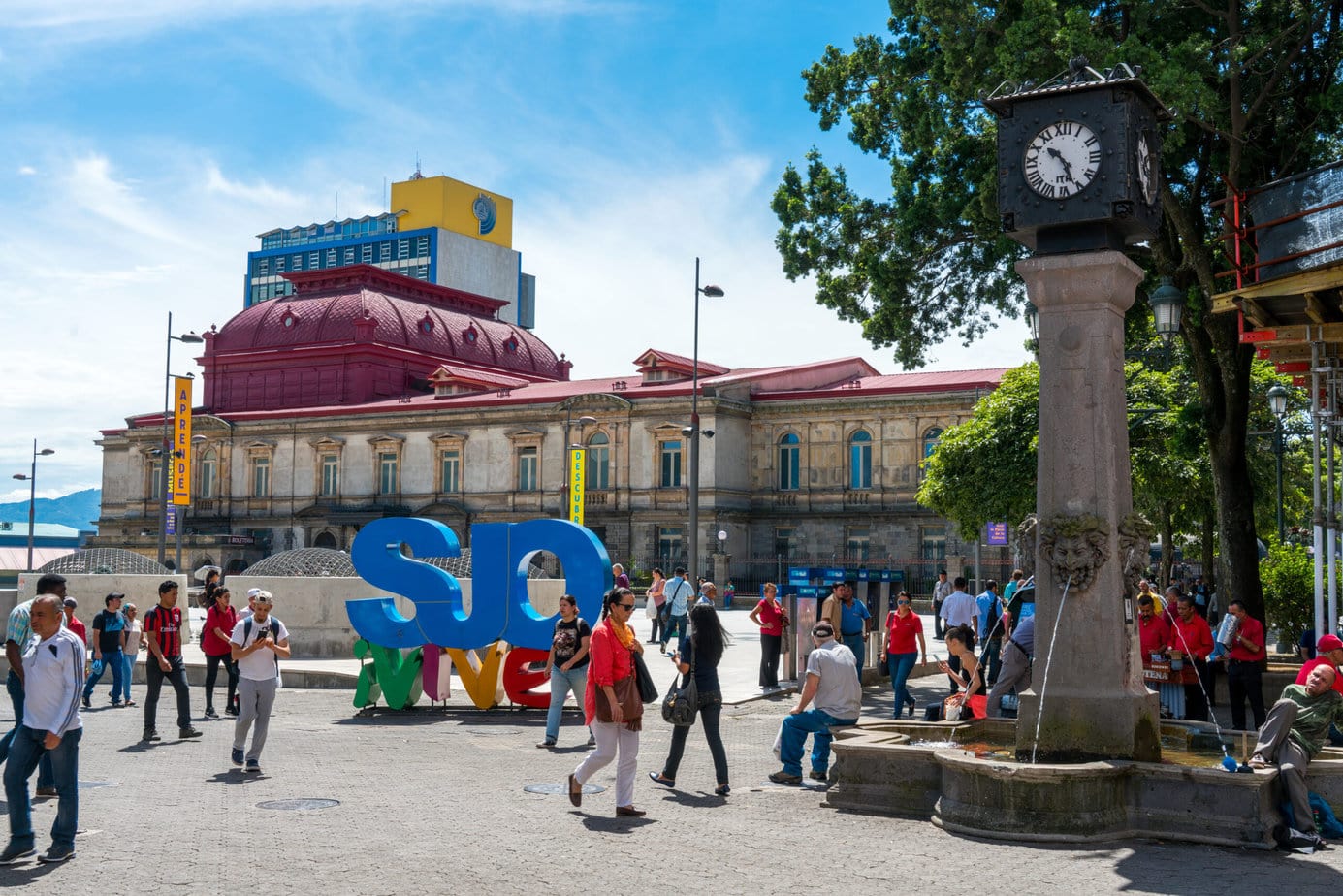
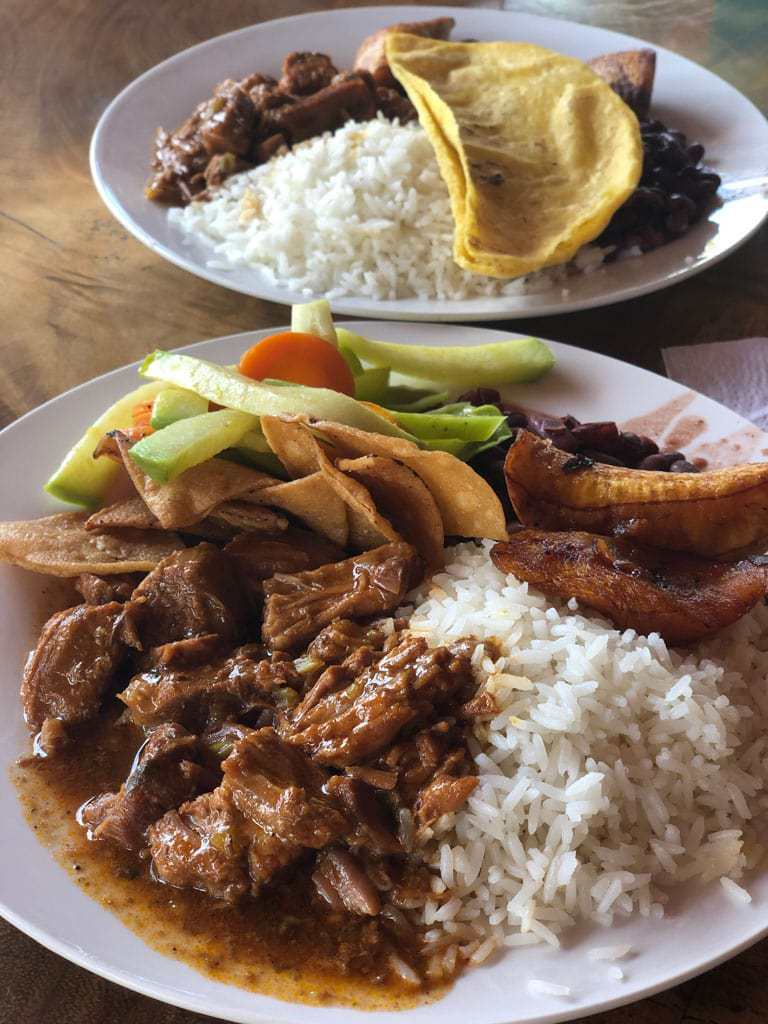
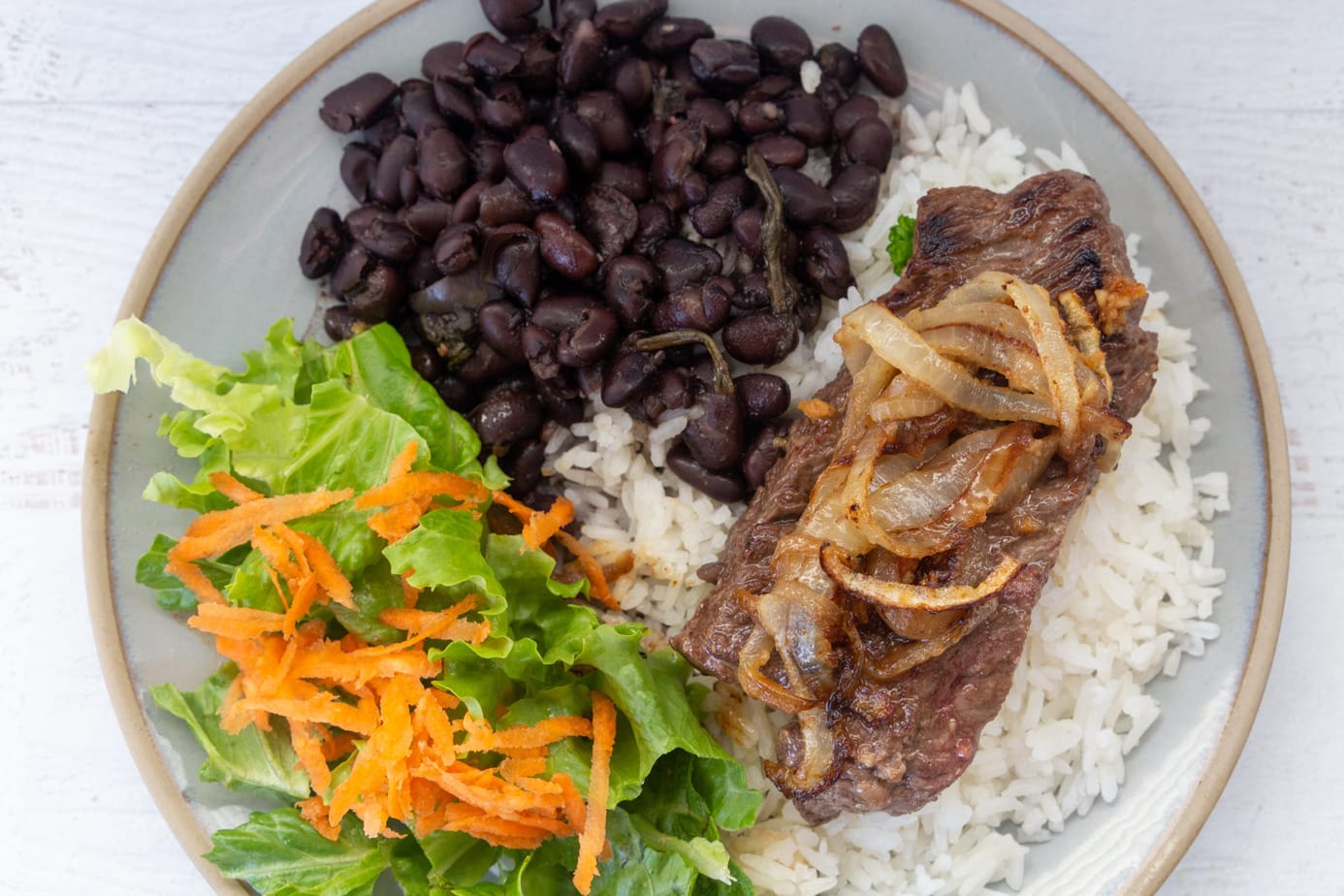


Muchas gracias por las recetas. Las aprecio mucho porque me encanta cocinar!!! Soy puertorriqueña, residiendo en Los Angeles, California. Noté que muchas de las recetas de Costa Rica, son típicas en Puerto Rico también. Te seguiré en las redes sociales. Una vez más gracias
¡Hola Taty!
Eso sí es cierto. De hecho, cuando fuimos a Puerto Rico estuvimos encantados con las comidas! Que dicha que vas a seguir las recetas- es un gusto para mi pubicarlas.
Pura Vida!
Christa
Thank you so much! My wife and I are taking our first trip to Costa Rica next spring and now I’m more excited about the food than anything. Do you have any tips on how to not go overboard because I mainly follow a Keto regimen. I understand that it may be difficult on the trip but I also don’t want to just say “forget it” and undo a lot of positive results. Thanks
Thank you for this. It’s been very useful as my daughter and I don’t eat meat so it’s nice to see there are other options for our trip this August. Your blog is so helpful.
I am so glad! ~Christa
Hi Christa!
Our 3 girls girlscout troop is going to Costa Rica. One girl was exposed to covid and needs to wait until she’s negative the day the rest of us leave. She is 19 yo and will need a ride from Liberia airport to our hotel in La Fortuna. Do you have a recommendation for safe and moderately price transportation for her to join us?
This is probably too late but I just saw your comment! Did she get home ok? I use Adobe Transfers from Adobe Rental Car!
I am impressed by your post that make a new post and prepare a new recipe, it is not suitable for everyone but you have done it, I think you will become a more successful person in life.
Pura vida! ~Christa
What about ensalada rusa?
Totally! Forgot about that one!